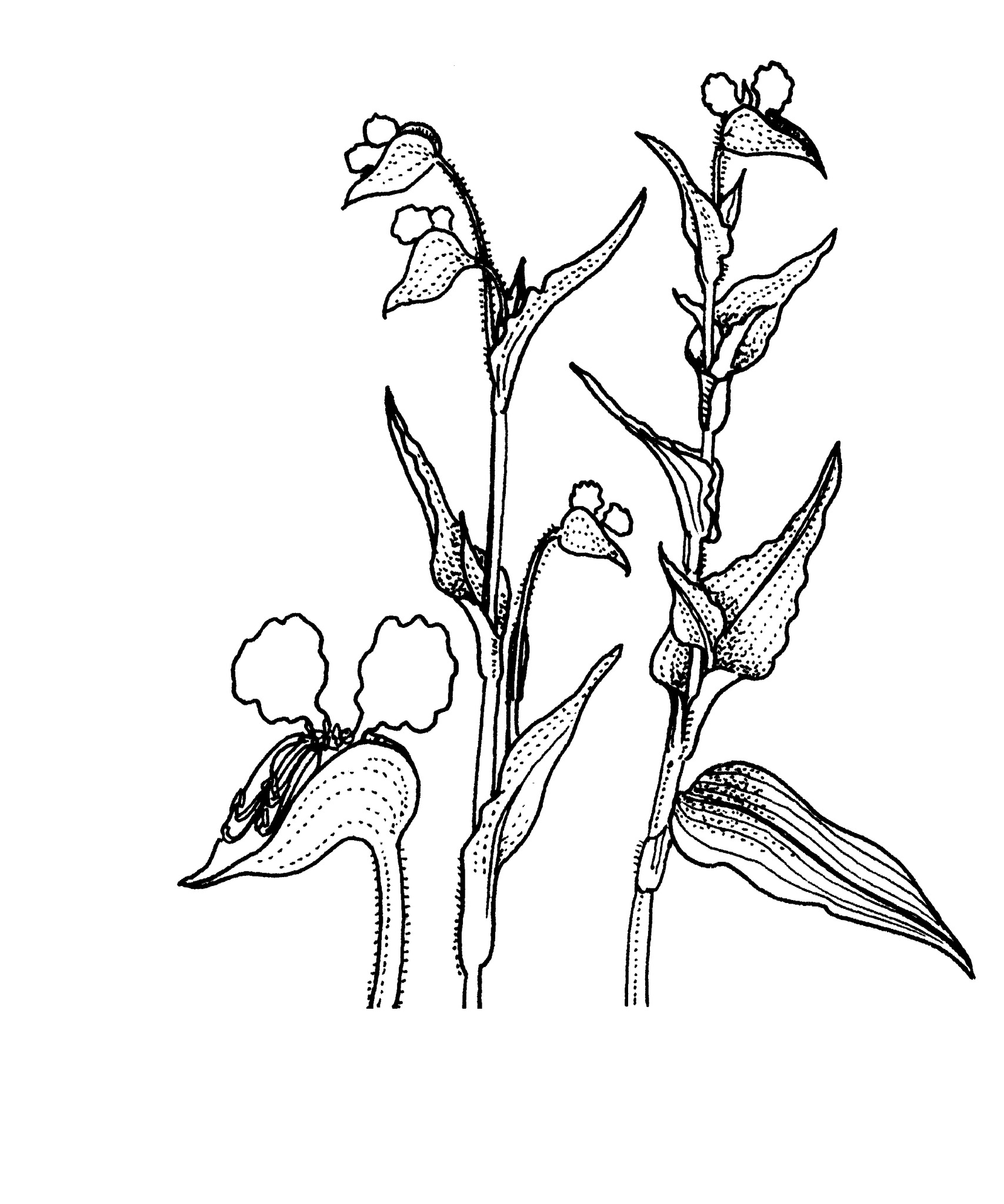
Named for the Dutch botanists Johan and Caspar Commelijn and Caspar’s son; referring to the two prominent petals and the smaller, less conspicuous one in many species.
Erect or trailing perennials, rootstock often tuberous. Leaves spirally arranged along the stems, ovateelliptic to lanceolate. Flowers in axillary cymes enclosed in folded, keeled spathe-like bracts. Sepals free, unequal, the upper hooded. Petals free, clawed, usually unequal with the lower petal reduced, white or blue. Stamens 3, usually of 2 types, sterile stamens 2-3. Fruit a dry dehiscent capsule.
Many species are weeds.
Some species used for fodder and medicine, others for their tuberous, edible roots. Most species in cultivation as ornamentals are part of the C. tuberosa complex which includes C. tuberosa, C. elliptica, C. coelestis and C. dianthifolia.
Seed or cuttings.
The asymmetrical, clawed flowers and variety of stamens and sterile stamens.
About 200 species worldwide, mostly from tropical areas. Australia has 9 native and 2 introduced species.
Source: (2005). Commelinaceae. In: . Horticultural Flora of South-eastern Australia. Volume 5. Flowering plants. Monocotyledons. The identification of garden and cultivated plants. University of New South Wales Press.
